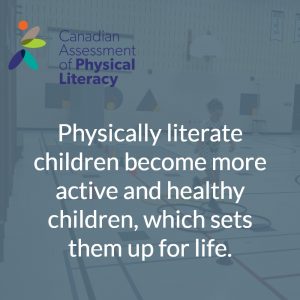Results from Canadian Assessment of Physical Literacy findings on more than 10,000 children
North Bay, ON, October 2, 2018 – The results from a large national research project led by the Healthy Active Living and Obesity Research Group (HALO) at the CHEO Research Institute shows that about two-thirds of Canadian children haven’t achieved an acceptable level of physical literacy.
Physical literacy is the motivation, confidence, physical competence, knowledge and understanding to value and take responsibility for engagement in physical activities for life. Physically literate children are fit, active and healthy children, which sets them up for life. Dr. Barbi Law and Dr. Brenda Bruner here at Nipissing University were part of the cross-Canada study team that has released the first “State of the Nation” report on physical literacy in children in this country.
Dr. Law and Dr. Bruner are the authors of Associations between teacher training and measures of physical literacy among Canadian 8- to 12-year old students, one of the fourteen articles that looked at different aspects of physical literacy and the Canadian Assessment of Physical Literacy (CAPL). This article was part of a special supplement in the journal BMC Public Health (LINK to http://bit.ly/BMCCAPL).
More than 10,000 children, aged 8 to 12, from 11 cities across the country participated in the study from 2014 to 2017. Using the Canadian Assessment of Physical Literacy (CAPL), children were assessed on a number of different areas, such as step counts and questions about daily activities.
“In our paper we are seeking to gain a better understanding of teachers’ role in the development of physical literacy, both generalist teachers and those who have specialized in physical education. If we as a country truly value health and physical literacy, we need to continue to monitor how our children are progressing, as we do with other forms of literacy which are assessed through standard measures, such as the EQAO tests in Ontario,” said Dr. Law. “More research is needed to determine how to better support all teachers in promoting the development of physical literacy, which includes movement skills, but also the motivation and confidence to participate in physical activities.”
Some highlights from Dr. Law and Dr. Bruner’s paper include:
- While the effects were small, children taught by PE specialists were more likely than those taught by generalists to attain recommended levels of motivation and confidence.
- While the effects were small, children taught by PE specialists were more likely than those taught by generalists to have better movement skills.
- Teacher training is only one of many factors that may contribute to a teacher’s influence on their students’ physical literacy.
The CAPL Tool can be used by coaches, educators, public health professionals and parents to increase physical literacy in children. The tool is a short, easy-to-administer series of tests that can be used to assess and monitor physical literacy. The materials are available in both English and French, free of charge at www.capl-eclp.ca.
This research study was made possible in part with support from the RBC Learn to Play Project, an initiative funded by RBC and the Public Health Agency of Canada and delivered in partnership with ParticipACTION, with additional support from Mitacs.

